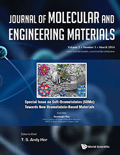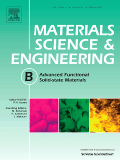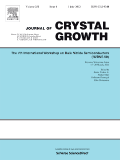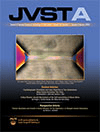
APPLIED PHYSICS A-MATERIALS SCIENCE & PROCESSING
Scope & Guideline
Pioneering Research in Materials Science and Processing
Introduction
Aims and Scopes
- Materials Characterization:
The journal emphasizes the characterization of materials at different scales, including structural, electrical, optical, and magnetic properties. This includes advanced techniques such as X-ray diffraction, electron microscopy, and spectroscopy. - Nanomaterials and Nanotechnology:
A significant focus is placed on the synthesis, characterization, and application of nanomaterials, exploring their unique properties and potential applications in electronics, photonics, and catalysis. - Energy Materials:
Research on materials for energy applications, including solar cells, batteries, and fuel cells, is a core area of interest, highlighting advancements in efficiency and sustainability. - Functional Materials:
The journal covers the development and application of functional materials, including ferroelectrics, piezoelectrics, and magnetic materials, with a focus on their performance in various applications. - Surface and Interface Engineering:
The exploration of surface treatments and modifications for enhancing material properties and functionalities, including superhydrophobic surfaces and coatings for corrosion resistance. - Computational Materials Science:
Research combining experimental work with computational modeling to predict material behaviors and guide the design of new materials.
Trending and Emerging
- Green and Sustainable Materials:
Research focused on environmentally friendly and sustainable materials is on the rise, reflecting a global emphasis on reducing environmental impact and developing recyclable materials. - Advanced Characterization Techniques:
Emerging techniques such as high-resolution electron microscopy, synchrotron X-ray techniques, and advanced spectroscopy methods are increasingly featured, allowing for deeper insights into material properties. - Hybrid and Multilayered Structures:
There is a growing trend in the development of hybrid and multilayered materials that combine different functionalities, such as photovoltaic and sensing capabilities, indicating a move towards multifunctional applications. - Smart Materials and Devices:
The journal is seeing an increase in publications related to smart materials that respond to external stimuli, including piezoelectric and shape-memory alloys, highlighting their applications in sensors and actuators. - Machine Learning in Materials Science:
The integration of machine learning and artificial intelligence in materials research is gaining traction, with studies focusing on predictive modeling and optimization of material properties.
Declining or Waning
- Traditional Bulk Materials:
Research focused on traditional bulk materials has seen a decline, as interest shifts toward advanced nanomaterials and composites that offer superior performance and functionalities. - Conventional Photovoltaics:
Studies centered on conventional photovoltaic technologies are less prevalent, with a noticeable shift towards innovative materials and hybrid systems that promise higher efficiencies and lower costs. - Basic Theoretical Studies:
There is a waning interest in purely theoretical studies without experimental validation, as the journal increasingly prioritizes research that combines theory with practical applications. - Standard Synthesis Techniques:
Traditional synthesis methods are being overshadowed by more innovative and eco-friendly approaches, such as green synthesis and advanced deposition techniques.
Similar Journals

JOURNAL OF ELECTROCERAMICS
Connecting Scholars and Industry in ElectroceramicsJOURNAL OF ELECTROCERAMICS, published by SPRINGER in the Netherlands, serves as a pivotal platform for advancing the field of electroceramics since its inception in 1997. With a keen focus on innovative materials and applications, this journal covers diverse areas encompassing ceramics and composites, condensed matter physics, and electronic materials, significantly contributing to interdisciplinary research. Although currently not an Open Access publication, the journal's engagement in rigorous peer review ensures the dissemination of high-quality research, supported by its respectable Q3 ranking in several relevant categories in 2023. Researchers and professionals will find value in its comprehensive scope, showcasing cutting-edge developments that shape the future of engineering and materials science. The JOURNAL OF ELECTROCERAMICS continues to play a crucial role in bridging theoretical discoveries with practical applications, making it an indispensable resource for students, scholars, and industry experts alike.

Journal of Molecular and Engineering Materials
Bridging Molecular Science with Engineering ExcellenceThe Journal of Molecular and Engineering Materials, published by World Scientific Publishing Co Pte Ltd, is a leading peer-reviewed journal that focuses on the intricate relationship between molecular science and engineering practices. With the ISSN 2251-2373 and E-ISSN 2251-2381, this journal aims to foster the exchange of cutting-edge research and developments within the fields of materials science, molecular engineering, and related applications. Although the journal currently does not operate under an Open Access model, it remains a vital resource for researchers, professionals, and students seeking in-depth knowledge and innovative methodologies in material design and engineering. The journal's esteemed reputation is reflected in its commitment to publishing high-quality research that addresses contemporary challenges and opportunities in material science, thereby contributing to advancements in technology and industry.

SURFACE AND INTERFACE ANALYSIS
Bridging Disciplines through Surface ScienceSURFACE AND INTERFACE ANALYSIS, published by WILEY in the United Kingdom, is a renowned journal specializing in the examination of nanoscale phenomena and the properties of surfaces and interfaces across various materials. With a focus on advancing the fields of Chemistry, Condensed Matter Physics, and Materials Science, this journal has established itself as a critical resource since its inception in 1979, bridging over four decades of scientific discourse. Notably, it holds a commendable position in the Scopus rankings, emerging in the 2023 Q3 quartile across multiple categories, including Chemistry (miscellaneous) and Surfaces, Coatings, and Films. Although it does not currently offer Open Access, SURFACE AND INTERFACE ANALYSIS remains pivotal in disseminating high-quality research, providing an essential platform for academic scholars, industry professionals, and students aiming to deepen their understanding of surface phenomena and material characteristics. Its comprehensive coverage of innovative methodologies, experimental results, and theoretical insights reaffirm its significance in the scientific community.

MATERIALS CHEMISTRY AND PHYSICS
Illuminating the Path of Materials Science AdvancementsMATERIALS CHEMISTRY AND PHYSICS is a leading peer-reviewed journal published by Elsevier Science SA, focusing on the intersection of materials science and condensed matter physics. With an esteemed impact factor and a distinguished reputation in its field, this journal holds a Q1 ranking in Condensed Matter Physics and a Q2 ranking in miscellaneous Materials Science categories as of 2023. Spanning over three decades since its inception in 1983, it provides a vital platform for researchers, professionals, and students to disseminate cutting-edge findings and innovations in materials characterization, properties, and applications. The journal is indexed in Scopus, boasting impressive rankings that reflect its commitment to publishing high-quality research. Although it does not currently offer an Open Access option, it remains an essential resource for those seeking to stay at the forefront of materials chemistry and physics.

Inorganic Materials-Applied Research
Advancing the Frontiers of Inorganic InnovationInorganic Materials-Applied Research is a pivotal journal dedicated to the dissemination of innovative research in the field of inorganic materials. Published by SpringerNature, this journal operates as a vital resource for researchers, professionals, and students alike, providing a platform for cutting-edge findings and methodologies related to the synthesis, characterization, and application of inorganic materials. With an ISSN of 2075-1133 and an E-ISSN of 2075-115X, the journal strives to bridge gaps in interdisciplinary studies, fostering collaboration across the engineering and materials science domains. Despite its current rankings placing it in the Q3 quartile for both Engineering and Materials Science categories, the journal aims for broader impact, seeking to enhance its visibility and contribution in publications through rigorous peer-review and open access options. Converged from 2010 to 2024, it remains committed to advancing knowledge and addressing contemporary challenges in materials science, thereby attracting contributions that are not only academically rigorous but also socially impactful.

Materials Science and Engineering B-Advanced Functional Solid-State Materials
Pioneering Research in Advanced Material ScienceMaterials Science and Engineering B: Advanced Functional Solid-State Materials, published by Elsevier, stands as a pivotal platform in the realm of materials science, focusing on the development and characterization of advanced solid-state materials. With an ISSN of 0921-5107 and E-ISSN of 1873-4944, this journal operates out of the United Kingdom and addresses critical issues in condensed matter physics, mechanical engineering, and mechanics of materials. Its consistent recognition, evident in its Q2 quartile rankings across multiple engineering and physics categories and a respectable scope of convergence from 1988 to 2024, signifies its substantial contribution to the field. Researchers and professionals seeking a venue for cutting-edge work will appreciate the journal's commitment to advancing knowledge in functional materials, with its open access features ensuring that innovative findings are readily accessible. Join a community of leading scholars engaging with the latest advancements, shaping the future of materials science.

Acta Metallurgica Sinica-English Letters
Advancing Metallurgy: Bridging Theory and Practice.Acta Metallurgica Sinica-English Letters, published by the Chinese Academy of Sciences, Institute of Metal Research, is a premier international journal that has been fostering the advancement of knowledge in the fields of Industrial and Manufacturing Engineering and Metals and Alloys since its inception in 1997. With a commendable impact factor and ranking within the top quartiles (Q1) of leading Scopus categories, this journal serves as a vital platform for researchers and professionals to disseminate innovative research findings and groundbreaking methodologies. Notably recognized with a Scopus rank of #34 out of 176 in Materials Science and rank #81 out of 384 in Engineering, it provides a robust space for high-quality, peer-reviewed articles, thus bridging the gap between theoretical advancement and practical application in metallurgy and materials science. Although currently not an open-access journal, its rigorous editorial standards and comprehensive scope ensure that only the most impactful research contributes to the scientific community and industry advancements globally. Acta Metallurgica Sinica-English Letters is an essential read for anyone eager to stay informed on cutting-edge developments within these crucial domains.

JOURNAL OF CRYSTAL GROWTH
Pioneering Research in Condensed Matter PhysicsJOURNAL OF CRYSTAL GROWTH, published by Elsevier, stands as a vital platform in the realm of condensed matter physics, inorganic chemistry, and materials chemistry. With its inception dating back to 1967 and a promising convergence continuing through 2024, this journal encompasses the latest research and advancements in crystal growth phenomena. Although it does not currently offer open access options, its rigorous peer-review process ensures high-quality scholarly contributions that are essential for researchers, professionals, and students alike. The journal's solid standing is reflected in its Scopus rankings, with placements in the third and second quartiles across relevant fields and notable percentiles. Operating from the heart of the Netherlands, JOURNAL OF CRYSTAL GROWTH not only fosters academic dialogue but also enhances the understanding of crystallization processes crucial for materials engineering and applied sciences, making it an indispensable resource for anyone dedicated to exploring the intricacies of crystal growth.

JOURNAL OF MATERIALS SCIENCE-MATERIALS IN ELECTRONICS
Exploring Innovative Pathways in Materials ScienceJOURNAL OF MATERIALS SCIENCE-MATERIALS IN ELECTRONICS, published by Springer, is a distinguished international journal that serves as a vital platform for the dissemination of cutting-edge research in the field of materials science, with a keen focus on electronics. Since its inception in 1990, this journal has consistently contributed to the advancement of knowledge across a range of interdisciplinary categories, including Atomic and Molecular Physics, Optical and Magnetic Materials, and Biomedical Engineering, achieving notable quartile positions in various 2023 Scopus rankings. With an impact factor that signifies its scholarly influence, this journal provides a rigorous peer-reviewed environment for researchers and practitioners to share innovative ideas, experimental findings, and theoretical developments. Although it does not currently offer open access options, the depth and breadth of topics covered—including condensed matter physics and bioengineering—make it an essential resource for those at the forefront of materials research. With a commitment to bridging the gap between theory and practical application, the JOURNAL OF MATERIALS SCIENCE-MATERIALS IN ELECTRONICS continues to pave the way for future explorations in the ever-evolving landscape of materials science.

JOURNAL OF VACUUM SCIENCE & TECHNOLOGY A
Exploring the Depths of Surfaces and Interfaces.JOURNAL OF VACUUM SCIENCE & TECHNOLOGY A, published by the esteemed American Institute of Physics, is a leading journal in the field of materials science and applied physics, with an ISSN of 0734-2101 and an E-ISSN of 1520-8559. This publication serves as a vital platform for researchers and professionals focused on condensed matter physics, surfaces and interfaces, as well as coatings and films, contributing significantly to our understanding of vacuum technology and its applications. With a commendable Q2 ranking in key categories such as Condensed Matter Physics and Surfaces and Interfaces, the journal showcases rigorous research that pushes the boundaries of science and technology. The journal is particularly noted for its impact within the community, holding impressive Scopus rankings that highlight its relevance and influence. Although not an Open Access journal, it remains a crucial resource for academics seeking high-quality, peer-reviewed articles from 1970 through 2024. We invite you to explore the latest advancements and innovative findings that this journal presents, positioning you at the forefront of research in vacuum science.